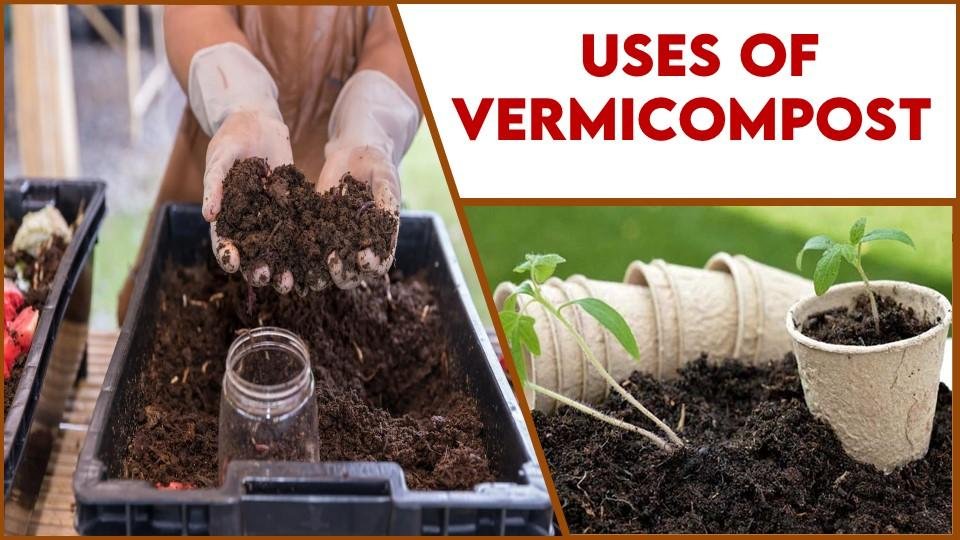In the world of agriculture (organic agriculture to be precise) the term compost simply refers to a ‘mass of rotted organic matter that is made from organic waste materials’. There are numerous types of composts being used today including green waste compost, manure compost, mushroom compost, bokashi, and so on …
One among them is a very popular type of compost known as vermicompost or worm compost. Vermicompost is an extremely advantageous organic fertilizer. The uses of vermicompost are numerous and the uses of vermicompost are diverse. Let us dive a bit deeper into vermicompost, the uses of vermicompost, the uses and advantages of vermicomposting, and much more.
What is Vermicompost?
Vermicomposting, as the name denotes is a method of making compost with the help of earthworms, which consume the soil biomass and excrete them in digested form. The compost so prepared is known as vermicompost. This organic wonder has attracted many studies and researchers over the years. Many of the recent uses of vermicompost are a result of such studies. Traditional uses of vermicompost are also popular. The traditional uses of vermicompost include the uses of vermicompost in agriculture and gardening.
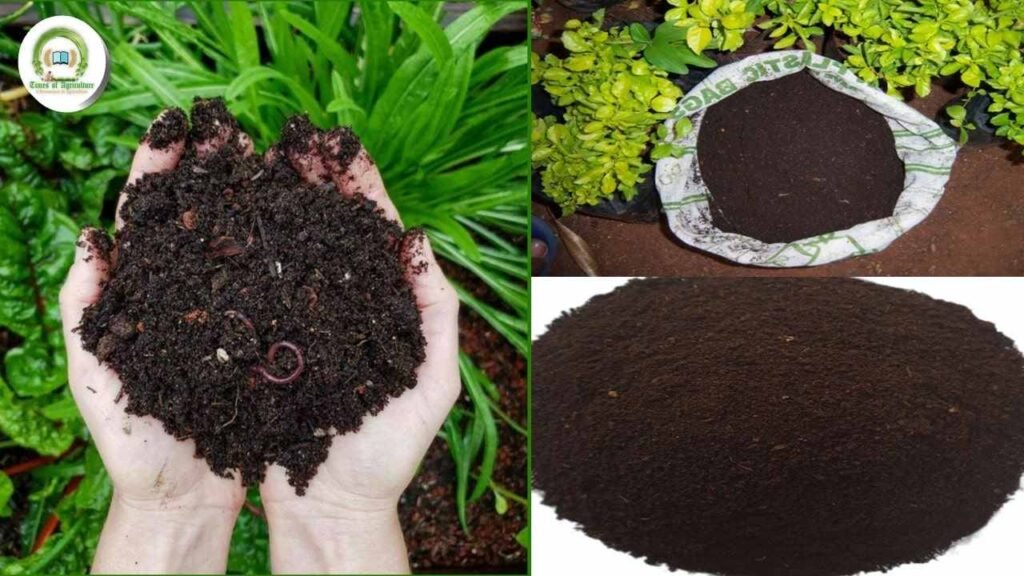
Soil fauna is a culmination of a myriad of diverse organisms ranging from protozoa to mammals, whose contribution to soil fertility has often been overlooked. But they provide unfathomable benefits to soil which makes them the real benefactors of the soil ecosystem. But earthworms have procured a unique position among them entitling these organisms to the position of the ‘friend of the farmer’.
- Fact check:
Name the organism used in the preparation of vermicompost.- Earthworms
Earthworm’s gut contains humic acids which help convert soil biomass into nutrient-rich blocks. They can increase soil porosity which further enhances soil fertility. These desirable characteristics of earthworms are ingeniously utilized in the production of vermicompost.
Before starting with the uses of vermicompost, it is imperative to understand the nutrient composition of vermicompost to reason why the uses of vermicompost are diverse and versatile
Read More:
Nutrient Composition of Vermicompost:
Vermicompost contains significant amounts of the most important triad in plant nutrition; NPK. In addition to this, they encase other important micro and macronutrients in considerable amounts. The nutrient composition of vermicompost is depicted as follows
| Sl.no | NUTRIENT | CONTENT |
|---|---|---|
| 1 | Organic Carbon (C) | 9.18 to 17.98 % |
| 2 | Total Nitrogen (N) | 1.5 to 2.10 % |
| 3 | Total Phosphorus (P) | 1.0 to 1.50 % |
| 4 | Total Potassium (K) | 0.60 % |
| 5 | Calcium (Ca) & Magnesium (Mg) | 22.00 to 70.00 m.e / 100 g |
| 6 | Available Sulphur (S) | 128 to 548 ppm |
| 7 | Copper (Cu) | 100 ppm |
| 8 | Iron (Fe) | 1800 ppm |
| 9 | Zinc (Zn) | 50 ppm |
Apart from these nutrients, they contain the following enzymes
- Protease
- Lipase
- Amylase
- Cellulose
The presence of these essential plant nutrients is the primary reason for the use of vermicompost in agriculture, uses of vermicompost in organic farming, and gardens, and also for the use of vermicompost in vegetables. Let’s understand what are the uses of vermicompost in points.
What are the Uses of Vermicompost
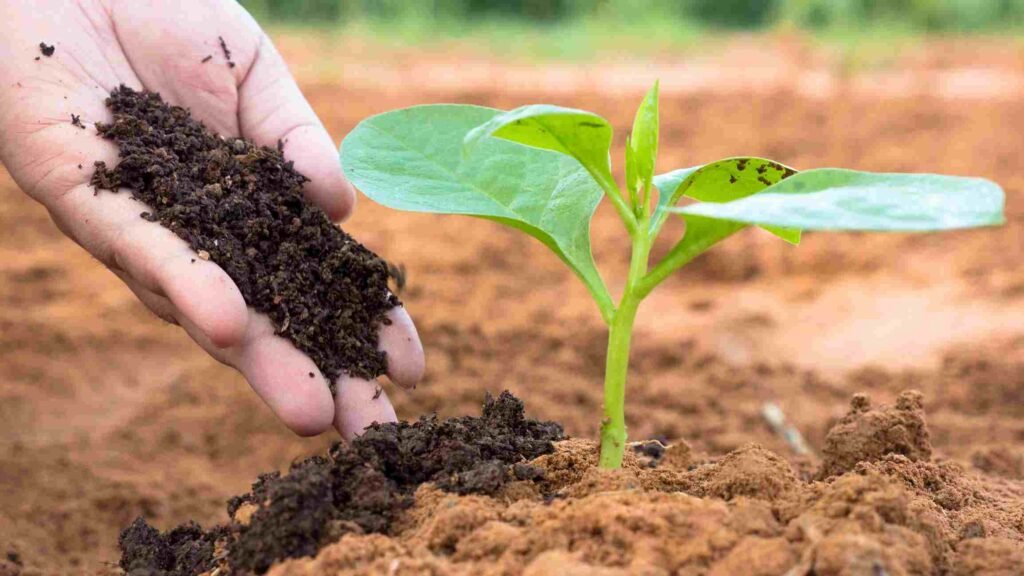
Homegrown
Popularly known as ‘Garden Gold’, The uses of vermicompost are numerous and versatile. They are extensively used in various sectors such as agriculture, gardening, and urban gardens, as a tool for land restoration, waste management, etc. Their popularly acclaimed quality of nutrient enrichment along with aiding the soil ecosystem as a whole has made them a quintessential part of modern agricultural practices. Following are some uses of vermicompost in points
Uses of Vermicompost in Agriculture
The countless uses of vermicompost in agriculture, precisely the use of vermicompost in organic farming, is due to its ability to act as a soil conditioner and to improve the soil texture wholly. This creates a healthy environment in which the plants can thrive. They are majorly used as enhancers of
- Soil fertility: Vermicompost contains important elements such as NPK, Carbon, Magnesium, and Calcium along with other micro and macronutrients that ameliorate soil fertility and help in improving plant growth. Also, vermicompost contains beneficial microbes that work symbiotically with the plant unlocking additional benefits for the plants. The increase in soil fertility is the primary reason explaining the uses of vermicompost in agriculture.
- Soil texture: Earthworms help in increasing the soil porosity which increases soil aeration leading to better soil productivity. They further improve the water retention capacity of soil thereby reducing wastage of water. Vermicompost harbors certain Nitrogen-fixing microbes that catalyze root nodule formations and symbiotic mycorrhizal associations, enriching the soil ecosystem.
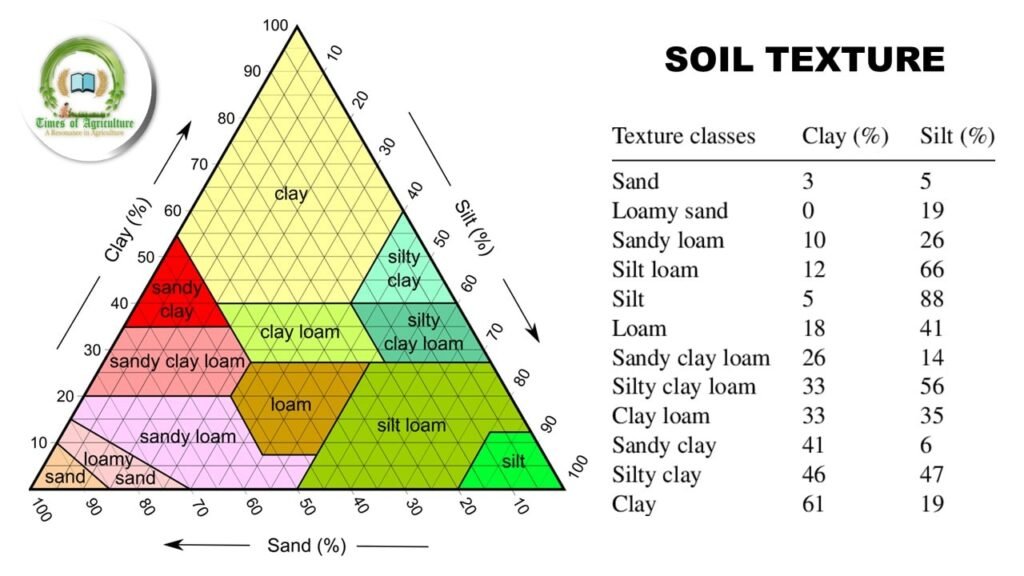
- Pest and disease tolerability: It contains vitamins, growth hormones, and antibiotics which confers pest and disease tolerability to plants. Bio-pesticide-enriched fertilizers also provide direct resistance to pests and diseases.
These 3 properties clearly explain the numerous uses of vermicompost in agriculture.
Uses of Vermicompost in Gardens
The use of vermicompost in garden areas and urban agriculture is primarily associated with its ability to act as a potting mixture. Along with it, vermicompost in the form of worm tea is also popularly used. The main uses of vermicompost in gardens include
- Potting Mixture:
The properties of vermicompost including the slow release of nutrients, porosity, moisture retention, ability to improve the soil texture, etc. have made it an indispensable component of the potting mixture. This is also a reason for the use of vermicompost in vegetables. A simple and common potting mixture consists of topsoil, coco peat, and vermicompost in the ratio

Topsoil: coco peat: vermicompost = 1:1:1
- Use of vermicompost in vegetables:
Vermicompost is rich in nutrients that aid in the production of fruits and vegetables. They improve the taste, luster, and quality of the produce. So vermicompost is used popularly in backyard vegetable gardens.
Uses of Vermicompost in Plant Nurseries
Vermicompost is used as a rooting medium and for the establishment of saplings in plant nurseries. They are superior to other synthetic growth media in this aspect.
- Land Restoration:
Land degradation has been one of the ensuing challenges of the green revolution. The increased use of fertilizers, pesticides, and other chemicals along with continuous exploitation of land in the quest for higher yields, has commensurately accelerated land and soil degradation.
The ability of vermicompost to improve soil structure, promote microbial activity, and facilitate nutrient absorption makes it the ideal amendment for rehabilitating degraded lands. Its use acts as an incentive for the resuscitation of a soil ecosystem from its ineluctable infirmity.
- Pollution Control:
The uses of vermicompost in pollution control is because, the vermicompost, with its microscopic inhabitants, possesses the ability to break down and degrade organic pollutants, heavy metals, and other harmful substances in the soil.
This can be efficiently used to sanitize industrial waste zones and other contaminated sites in urban areas that are posing a constant threat to the environment. Thus it can convert harmful substances into harmless materials aiding in the enhancement of living standards for local communities.
It is evident from the above discussion that vermicompost encompasses certain unique and wholesome properties that aptly explain the uses of vermicompost in a wide range of fields from agriculture to pollution control. But that’s not all, they possess some extra advantages that make them incredibly attractive for something that had its inception in our waste bins.
Read More:
- Is Mushroom Veg or Non Veg? – Let’s Know the Amazing Fact
- How Does Vertical Farming Work | Vertical Farming at Home
Advantages of Vermicompost:
The majority of the uses and advantages of vermicomposting have already been discussed under the uses of vermicompost. Others include
- Vermicompost is an all-in-one package for agriculture: Its chemical and physical properties confer benefits such as increased soil fertility, both direct and indirect resistance to pests and diseases, and increased plant yield and productivity as already discussed in the use of vermicompost in agriculture part.
- Biodegradation of agricultural residues: Vermicompost has enzymes like protease, lipase, amylase, cellulase, and chitinase whose functions involve the biodegradation of agricultural residues in the soil. It also catalyzes the further attack of microbes on the residues, fastening the process.
- It is cheap and cost-effective: For a natural fertilizer, that is primarily made of organic waste and has a large number of benefits, vermicompost is cheaper compared to other fertilizers conventionally used in agriculture, making it the perfect cost-effective organic fertilizer.
- Perfect for use in backyard vegetable and ornamental gardens: Although they improve the overall health of plants and increase their productivity, unlike other natural manures and decaying organic wastes, they do not emit any foul odors, making them convenient for use in one’s backyard.
- Easy to prepare and use: The production of vermicompost is a simple process and does not require any technical knowledge. It can be done by the farmer himself with a little bit of training.
- Entrepreneurial prospects: Vermicomposting can be undertaken as an entrepreneurial venture as it has a high potential for success. The initial investment is low and can be made by farmers who don’t gain sizeable incomes as well. Minimal labor is enough. As there is an increasing emphasis on organic agriculture especially in individual homes, there is expected to be an increase in demand that can be exploited if the business is done dexterously.
- Promoting sustainability: The use of vermicompost can reduce the extensive use of chemical fertilizers and pesticides up to an extent. This leads to improvement in soil properties and soil ecosystem rejuvenation.
How to prepare Vermicompost?
Now that we have understood the uses of vermicompost, let’s look at its preparation, the materials, the type of worms used in vermicomposting, the end product of vermicomposting, etc. The easiest and most efficient method used is the pit or heap method. That is, compost is prepared in a pit or heap. The essential materials required are
Materials required for vermicomposting
- Basic raw material: any organic material generated on the farm like bhusa, leaf fall, paddy husk, etc. These are used as feeding material for the earthworms.
- Starter material: cow dung, biogas slurry, or urine of cattle. This initiates the process of feeding
- Thatched roof or vermished: to cover the compost.
- Soil animal: Earthworms. There are different types of earthworms used in vermicomposting.
Types of Earthworms Used in Vermicomposting
When someone asks you to name the organism used in the preparation of vermicompost, you should answer undoubtedly as earthworms. Earthworms belong to Phylum Annelida of Animal Kingdom. They are characterized by their long and cylindrical body-containing grooves. Although hermaphrodite, two mature worms are required to propagate. Their average life span varies with species, ranging from 1 to 10 years.
| Kingdom | Animalia |
| Phylum | Annelida |
| Class | Clitellata |
| Subclass | Oligochaeta |
| Order | Haplotaxida |
| Family | Lumbricidae |
| Genus | Lumbricus |
| Species | Terrestris |
There are more than 3000 species of earthworms in the world. On the basis of their soil niche, Earthworms can be broadly classified into Epigeic (surface dwellers) and Epianecic (subsoil dwellers). In detail the classification looks like:
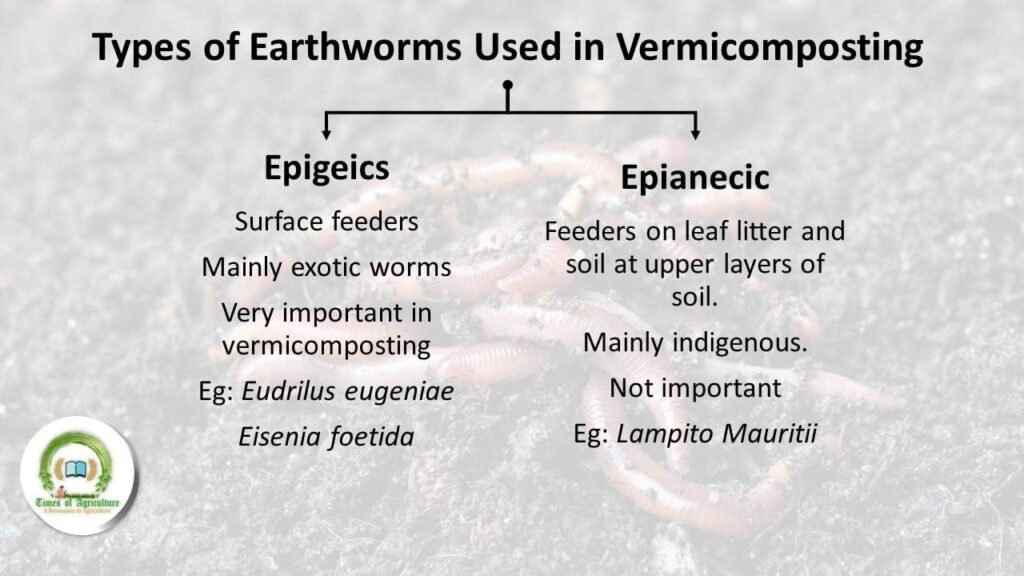
In the case of vermicomposting, Epigeic group worms are widely used. Among them, Red wigglers ( Eisenia fetida ) are considered to be the best species to be used for vermicomposting. Another type of earthworm which is also used for vermicomposting is the African Nightcrawler (Eudrilus eugeniae).

Favorable Conditions for Vermicomposting
- pH range: 6.5 to 7.5
- Moisture: 60 to 70%
- Aeration: 50% aeration from total pore space
- Temperature: 180C to 350C
Mechanism of Preparation of Vermicompost
Step 1: Prepare the pit or heap:
They are prepared by either the pit method or the heap method. The dimensions of the pit are 10 x 4 x 2 feet. The length or breadth can be increased but not the depth as earthworm activities are confined to 2 feet depth only.
Step 2: Select a suitable location:
The location selected should be shady and devoid of the occurrence of water stagnation. The site should be near a water source.
Step 3: Bed preparation:
The compost should be prepared in layers with each layer having different types of materials.
- First Layer: Bedding material of 1″ thickness with soft leaves.
- Second Layer: Organic residue layer consisting of finely chaffed material consisting of 9″ thickness.
- Third Layer: An equal mixture of cow dung and water with a thickness of about 2″ depth.
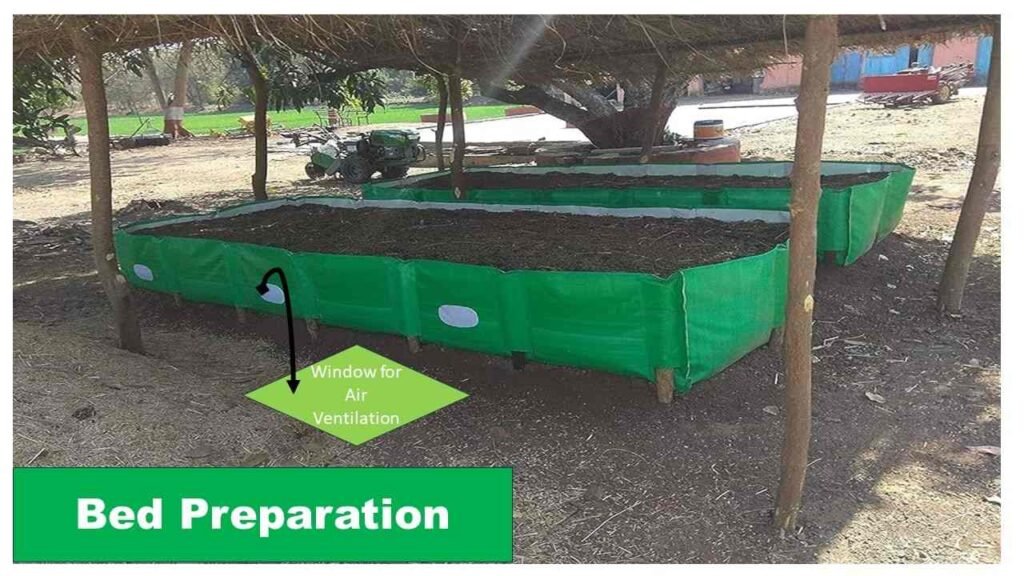
Step 4: Maintain proper moisture:
Maintain proper moisture in the pit by constant turning and watering.
Step 5: Introduction of worms:
On the 24th day, 4000 worms should be introduced into the compost pit. The compost should be turned and watered regularly after that. Within a few days, the materials would turn into compost.
Step 6: Harvesting the vermicompost :
Watering should be stopped 1 week before harvest. Initially, the top layers of the compost should be disturbed manually. This forces the earthworms to penetrate deeper layers making the top layers free of worms. The materials from the top layers are collected and the process is repeated. The collected produce is then sieved using 2 mm sieves and is then transferred to polybags. This collected material is called vermicompost and is stored for later use.
This is how vermicompost is prepared. The end product of vermicomposting is used as worm castings or worm tea. Also, The end product of vermicomposting is used as a starter for the next batch of compost.
Read More:
- Terrace Farming in India: Comprehensive Guide for 2023
- How to Make Natural Colours From Flowers: Exploring Nature’s Palette
Conclusion
Through this discussion, we have looked primarily at the uses of vermicompost, the uses and advantages of vermicomposting in agriculture, the use of vermicompost in organic farming, the use of vermicompost in garden areas, in vegetables, and also the uses of vermicompost in pollution control and land regeneration. We have also seen its benefits and its preparation.
Vermicompost has indeed lived up to its name, the Garden Gold. But it doesn’t end there, vermicompost also possesses land regeneration and pollution control abilities which can unlock the keys to sustainable agriculture, resuscitating tiny hopes in our minds of a greener and better future. It is indeed wonderful how such tiny organisms can turn something useless into such useful products that can fillip the whole food chain by acting on its foundational counterpart. Therefore the uses of vermicompost should be popularised along with promoting responsible and sustainable agriculture.
Latest Post
- Study Agriculture Abroad : A Complete Guide for USA

- July Issue (2024): Times of Agriculture Magazine
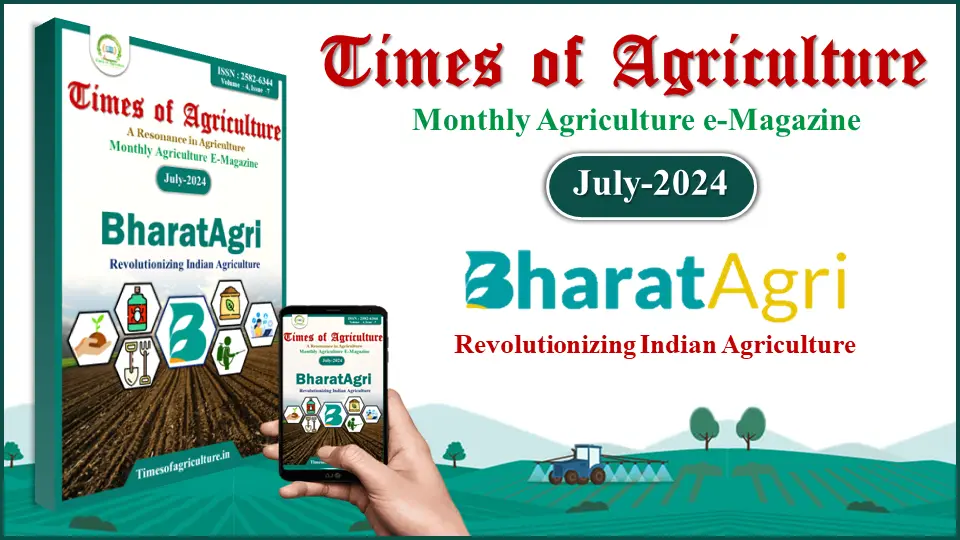
- Why Money Plant is called Money Plant ? Answer in 5 min

- How to grow Monstera from Cutting: 5-Step Detailed Guide

- Latest 10 Finest Terrace Garden Ideas to Transform Your Rooftops

- Top 10 Low Light Hanging Plants to make your Room Crunchy

- Best Water Harvesting Techniques for a Sustainable Future
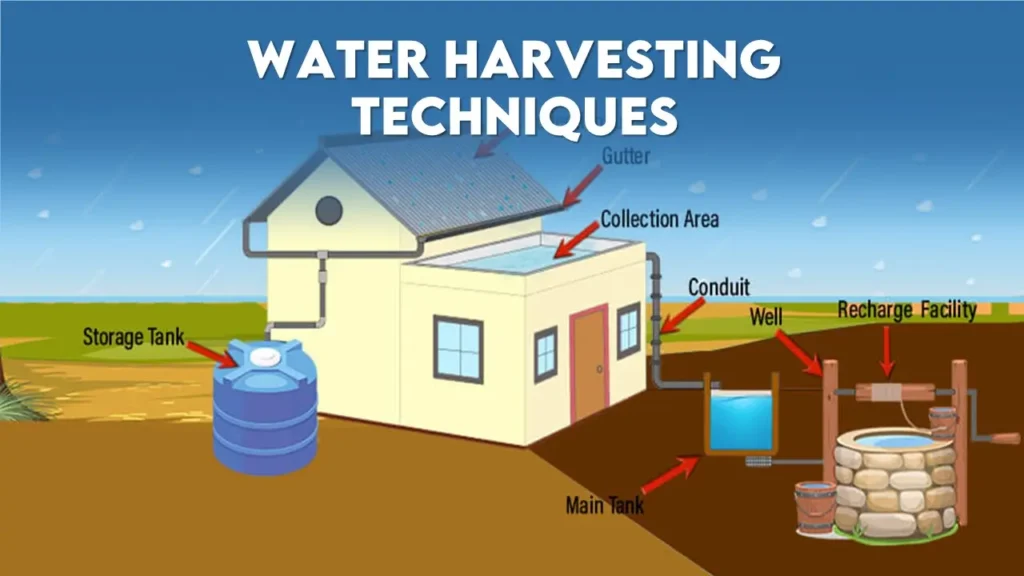
- Low Maintenance Indoor Plants for India: 15 Best plants for home gardening
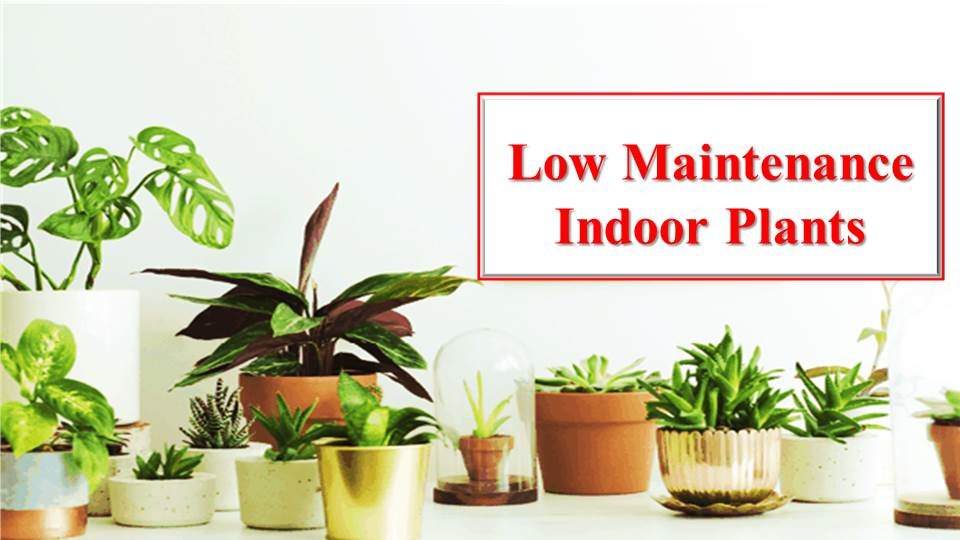
- Top 23 Flowering Trees in India: Flower Tree for Home



